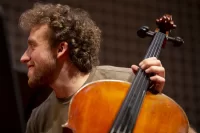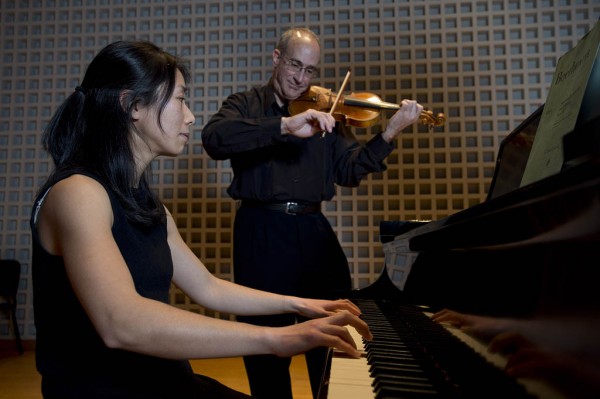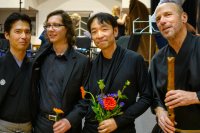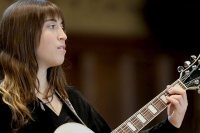
Violinist Stein, pianist Naruse to present complete Beethoven sonatas
Two members of the Bates music faculty present the complete series of Beethoven sonatas for violin and piano in three concerts in the coming weeks.
Violinist Dean Stein and pianist Chiharu Naruse perform at 3 p.m. on two Sundays, Feb. 3 and March 3; and at 7:30 p.m. Friday, April 12, all in the Olin Arts Center Concert Hall, 75 Russell St.
Admission per concert is $10, available at batestickets.com. Free tickets are available by reservation for the first 50 seniors or students; please contact 207-786-6135 or olinarts@bates.edu.
Maine-based musicians with international careers, Stein and Naruse have played together in larger chamber ensembles over the years but made their debut as a duo only last fall.
The February program includes the Sonata No. 7 in C minor (Op. 30, No. 2), which marks a transition to the composer’s mature style in scope, harmonic language and structure. The program also includes sonatas No. 4 in A minor (Op. 23); No. 8 in G major (Op. 30, No. 3); and Beethoven’s first violin and piano sonata, No. 1 in D major (Op. 12, No. 1).
In March, Naruse and Stein play the Sonata No. 5 in F major (Op. 24), nicknamed “Spring” because of what music writer John Henken called its “generally cheerful sense of zesty blossoming”; also, No. 10 in G major (Op. 96) and No. 6 in A major (Op. 30, No. 1).
The April program ends the series with the celebrated “Kreutzer” sonata (No. 9 in A major, Op. 47), known for its emotional power, as well as for the difficulty of the violin part. Also featured are No. 2 in A major (Op. 12, No. 2) and No. 3 in E-flat major (Op. 12, No. 3).
While Beethoven wrote these 10 works relatively early in his career, there’s no mistaking the sensibility behind them. “While you find his debt to his predecessors,” such as Haydn and Mozart, “you also find his stamp on the music right from the opening of the first sonata,” says violinist Stein.
“He has his own voice already. He has his own sense of humor already.”
Where other composers of the era tended to make the violin secondary to the piano in the sonata form, Beethoven treated the two as equal partners. “The way the instruments blend together, move apart and develop motivic ideas is pure Beethoven,” Stein says.
Naruse and Stein structured the three Bates programs such that each contains a particularly popular or otherwise outstanding work, and each represents a chronological mix.
And there was no choice, they add, about concluding the series in April with the “Kreutzer” sonata. Like Beethoven’s Symphony No. 9, Naruse says, the “Kreutzer” has musical themes that are utterly compelling. “It sticks in your mind and you don’t forget.”
With oboist and fellow Bates faculty member Kathleen McNerney, Stein is co-artistic director of the VentiCordi Chamber Music Festival in Kennebunkport. He is also on the Bowdoin College faculty, performs with the Atlantic Piano Trio and is concertmaster of the Maine Music Society. For the past year Stein has regularly performed as guest first violinist with the Portland String Quartet.
A native of Japan, Naruse moved to the United States to study with Bates artist-in-residence Frank Glazer in 2002. She has toured France and Japan, and in Maine has been a featured artist at the Ocean Park Music Festival and the Franco-American Heritage Center.
In summer 2012, she performed Beethoven’s Piano Concerto No. 3 in four Maine locations with Maine Pro Musica. Naruse also teaches at the Portland Conservatory of Music, where she is the director of the professional division.





